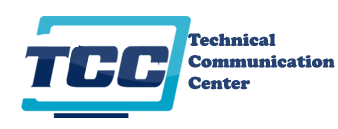Technical Writing
4 Variables to Determine Your Success at a Technical Writing Job Interview
When a reader asked the “best way” to get ready for a technical writing assessment test and job interview I realized how hard it is to give a satisfactory answer. The reason is, the appropriate and really truthful answer depends not on a single but the following four variables: (1) Historically Specific Job Market When…
Read MoreSTC India Article: "7 Ways to Avoid Misunderstandings When Writing for an International Audience"
© 2010 Ugur Akinci Just published my first article in INDUS, STC (Society for Technical Communication) India Newsletter, October 2010 issue. 7 Ways to Avoid Misunderstandings When Writing for an International Audience Please let me know what you think. Welcome all comments…
Read MoreHow to Create PDF with Acrobat-Alternative: "Smart PDF Creator"
© 2010 Ugur Akinci Adobe Acrobat is a marvel of a tool. The things that you can do with it is too long a list to print here. But what if all you need to do is covert a MS Word or FrameMaker file to PDF? Would you still need Adobe Acrobat 9 Pro (which…
Read MoreHow to Develop Your Technical Illustration Skills
© Ugur Akinci As I mentioned several times in the past, if you are a technical communicator who enjoys graphic arts, you are missing something in your career if you have not developed your technical illustration skills. Our industry is very ripe for those writers who can also draw and create all kinds of technical…
Read MoreEliminate "I" and "You" from Peer Reviews
© 2010 Ugur Akinci I have previously mentioned in another blog post that one of the best techniques to use in a peer review is to eliminate the second-person singular pronoun, “You.” I recommended talking in terms of “me” and “I” in order not to offend the other party. For example, instead of saying “You…
Read MoreA Great Government Web Site Dedicated to Plain Language: http://www.plainlanguage.gov
© 2010 Ugur Akinci President Barack Obama ushered in a new age in technical communications by signing the “Plain Writing Act of 2010” on October 13, 2010. According to this, within one year, all U.S. government agencies are supposed to generate only documents written in a plain language. I found this excellent federal web site dedicated to the Plain…
Read MoreWhat Should Today's Ideal Help (User Assistance) Format Look Like?
© 2010 Ugur Akinci Alan Porter of WebWorks help authoring software has released a new white paper titled “Delivering Help for Today’s Web” which can be ordered from aporter@webworks.com Porter raises a number of important issues that I’ve also been thinking about for some time. It’s true that yesterday’s static help file system is losing…
Read MorePresident Obama Signed Plain Writing Act of 2010
© Ugur Akinci A new era has begun in the United States when President Obama signed the Plain Writing Act of 2010 on October 13, 2010. According to this, all U.S. government agencies and offices are now mandated to create all their documents and communications in clear, uncomplicated English. Here is the text of…
Read MoreHow to Avoid Dangling Participles in Your Technical Writing
© Ugur Akinci “Dangling Participles” is the kind of writing error you should avoid in your technical documents because it changes the meaning of a sentence and often leads to unintended humor. But first — what is a “participle”? PARTICIPLE is the present- or past-participle form of a verb which is used as an ADJECTIVE.…
Read MoreHow to Create a Pie Chart with Adobe Illustrator
© 2010 Ugur Akinci Did you know that you can create 3-D pie (and other types of) charts with Adobe Illustrator? Here is how: (1) Select the pie chart tool from the tool bar and double-click it to display the Graph dialog box: (2) Enter 200 px for both Width and Height of the chart…
Read More